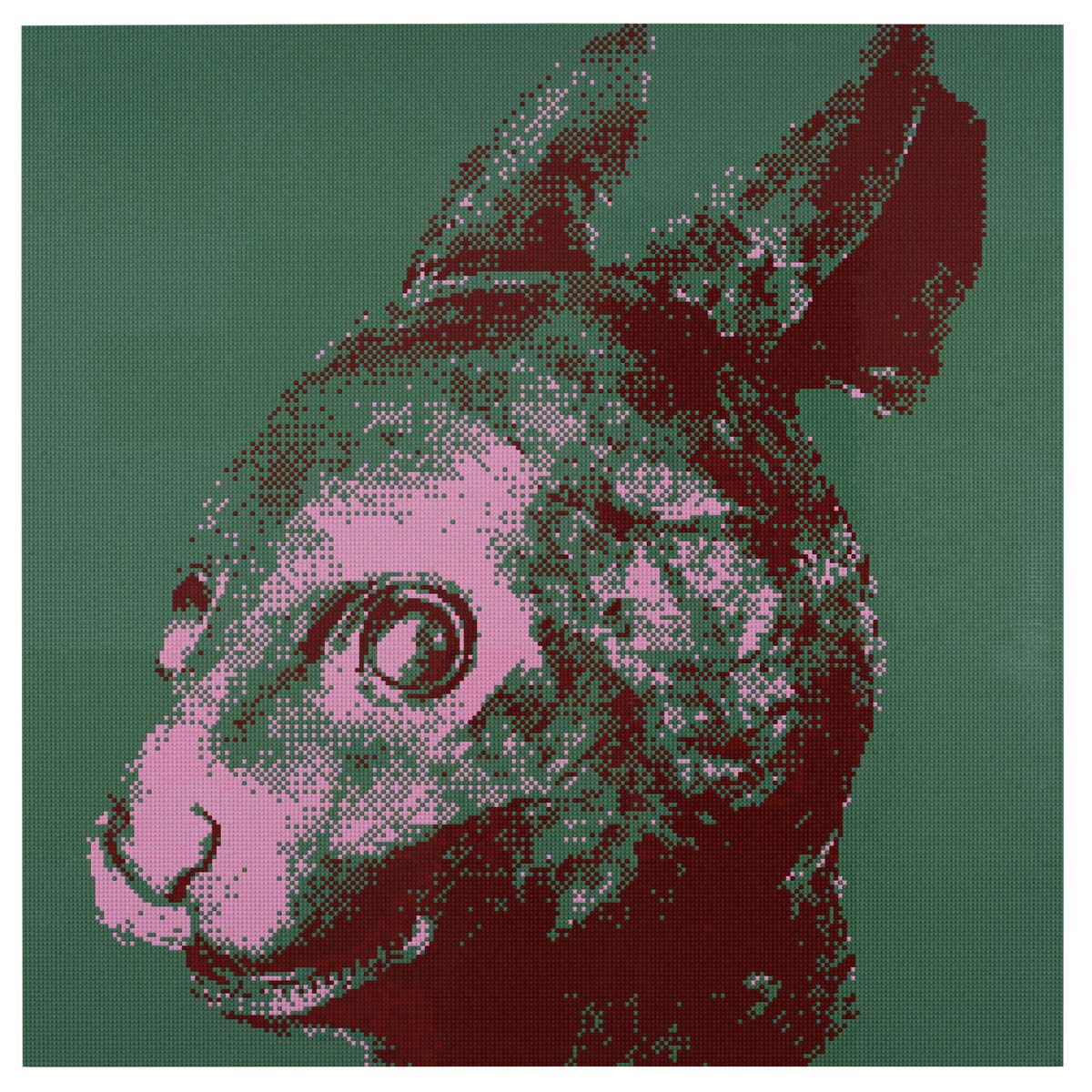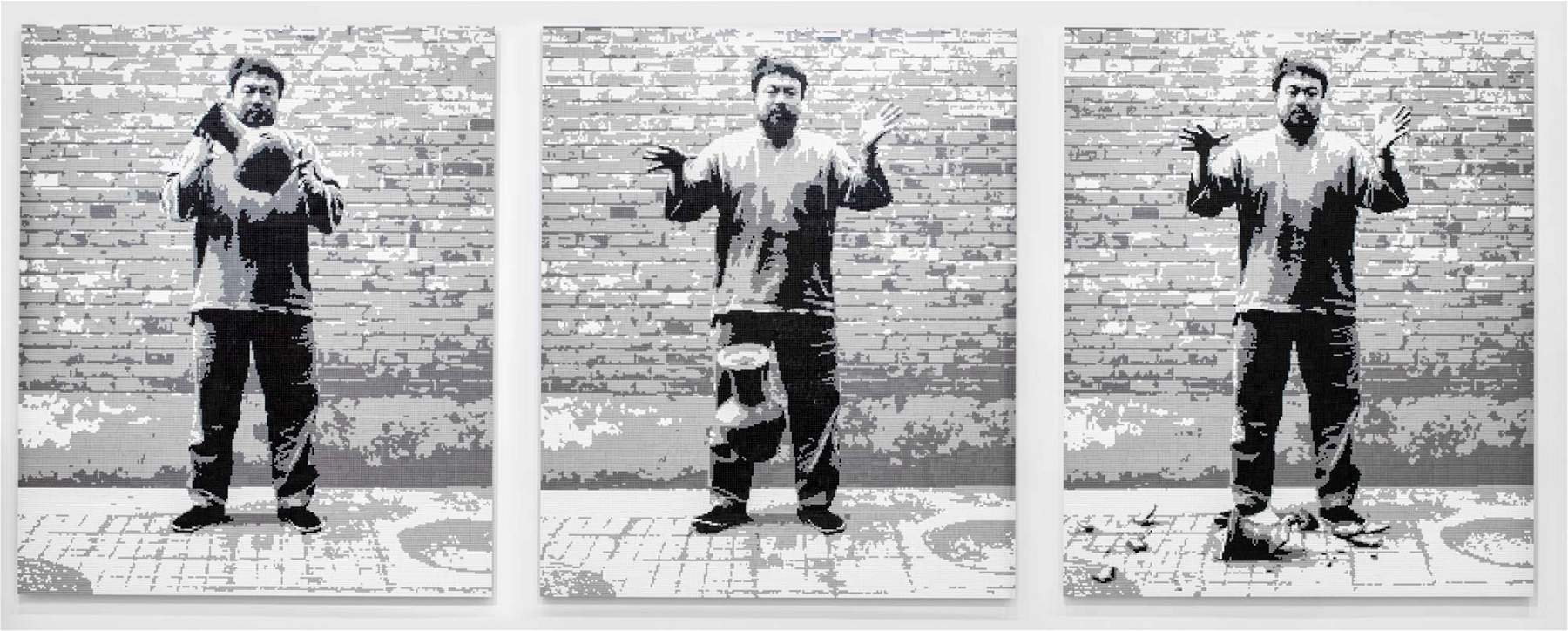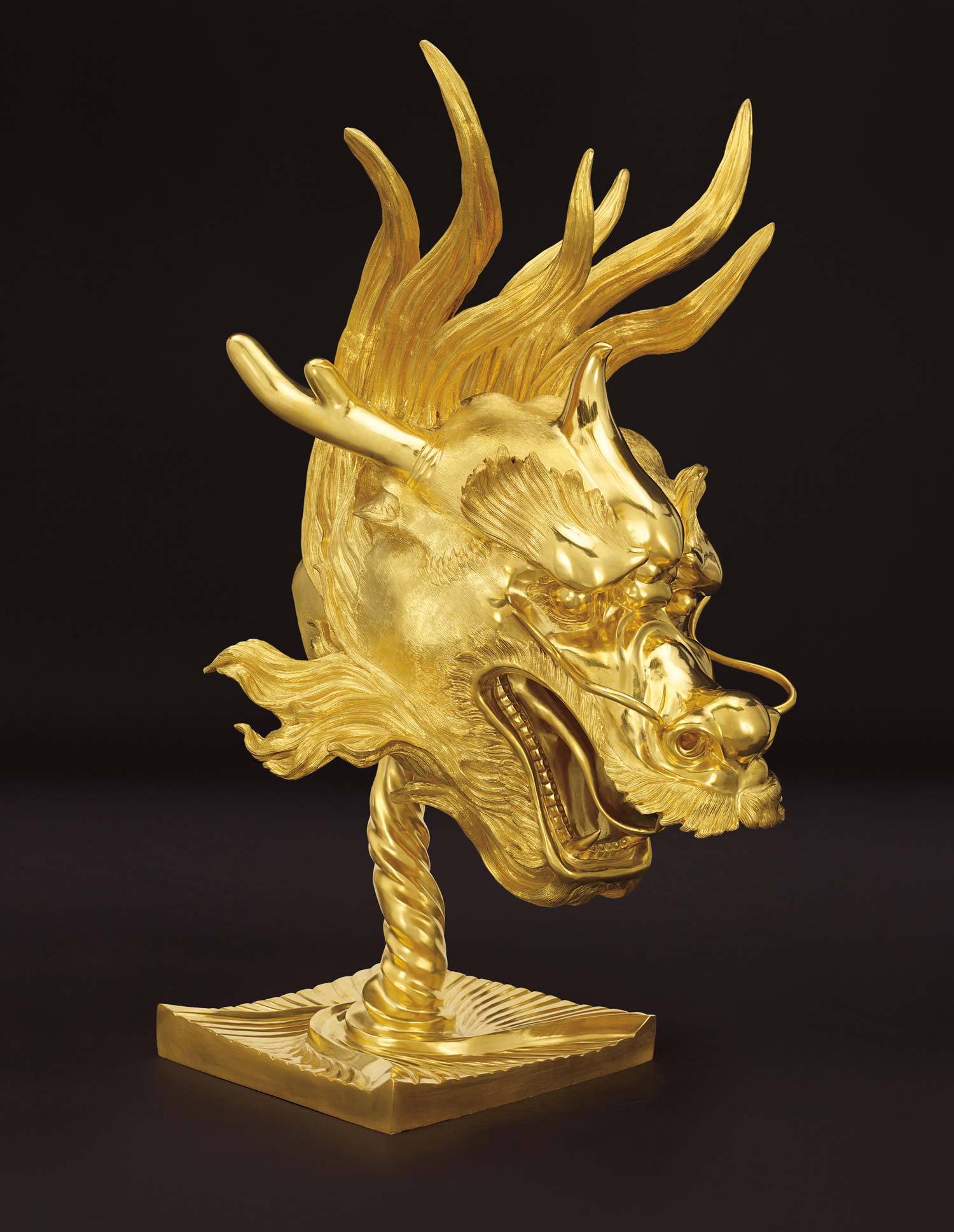Switzerland, Ai Weiwei exhibits his works of Lego bricks at Vito Schnabel Gallery
Vito Schnabel Gallery presents, at the gallery’s headquarters in Sankt Moritz , Switzerland, the exhibition Ai Weiwei: Zodiac, a solo show by the Chinese artist centered on three central groups of his works, including the triptych Dropping a Han Dynasty Urn (2015), twelve LEGO Zodiac portraits (2018), exhibited for the first time, and the celebrated Circle of Animals/Zodiac Heads: Gold (2010) series, consisting of twelve gilded bronze sculptures. The exhibition, the gallery’s first collaboration with the renowned Chinese artist and activist, is on view from Jan. 27 to March 5, 2023.
Engaging Ai Weiwei’s deep admiration for Duchampian ready-made and his longstanding interest in ancient historical artifacts, the works on view in this exhibition aim to raise questions about the authenticity and formation of cultural values and scrutinize existing power structures. Together, they aim to create tension between past and present, ancient and modern, in order to provoke important conversations about loss and preservation, repatriation and cultural heritage, censorship and surveillance. With Zodiac, Ai Weiwei invites visitors to join his exploration of the relationship between an original and a copy, what is “real” and “fake.”
In 1995, the artist unveiled Dropping a Han Dynasty Urn, one of the most provocative works of his career up to that point: a series of black-and-white photographs that captured him shattering a precious 2,000-year-old ceremonial urn. For the performance documented in these photographs, Ai stood in front of the camera, staring directly into the lens to face the viewer’s gaze as the shutter clicked. The three resulting images of Dropping a Han Dynasty Ur n show the urn in the artist’s hands, the urn falling to the ground, and the urn shattering on the floor. Challenging existing value systems through a highly subversive act, this piece was Ai Weiwei’s response to China’s Cultural Revolution (1966-76), its decades-long desecration of antiquities and relics under Chairman Mao, and the effects of that erasure through an act of both destruction and transformation.
In the exhibition at Vito Schnabel Gallery, visitors will find Ai’s reimagining of this seminal work, Dropping a Han Dynasty Urn from 2015. Created two decades after Ai’s groundbreaking shattering of an ancient urn, the version in the exhibition is rendered in LEGO bricks. Arranged in three panels, the LEGO blocks achieve a pixelated black, white and grayscale effect that approximates digital images and surveillance footage, the photography-based idioms familiar to a generation for whom daily life is mediated by the Internet.
Drawn to them for their accessibility and playful sensibility, the artist has been using LEGO bricks in his art practice since 2007. These colorful bricks areintuitive tools for creative expression and storytelling for children and adults. Ai has repeatedly called LEGOs a “language,” an analogous form of visual communication that uses structured and systematic construction methods to express visual symbols and ideas. Their combination of versatility and precision allows the builder to create a specific project, such as a famous historical building, from an idea or set of instructions. Its replicability and industrial design as a readymade object speaks to the influence of his artistic references, chief among them Warhol and Duchamp. Ai explains, “Lego destroys this idea of ’original,’ which I like.”
In the past, Ai has used LEGOs to draw attention to human rights violations, acts of censorship, and freedom of expression issues. He has created hundreds of large-scale portraits dedicated to activists and advocates, prisoners of conscience and victims of crime. In his Zodiac (2018), he reinterprets his subject using the bright acid palette of Pop art to create 12 new LEGO wall portraits that have never been exhibited to the public. Each 190-centimeter by 190-centimeter square panel will represent one of the 12 signs of the Chinese zodiac: the mouse, ox, tiger, rabbit, dragon, snake, horse, goat, monkey, rooster, dog, and pig. These will be displayed in the gallery in their cosmological order. The series, which furthers the important political and cultural narrative that Ai first explored in the twelve bronze sculptures in his famous work Circle of Animals/Zodiac Heads (2010), builds on his ongoing interests in digital aesthetics and their centrality to contemporary life. Using a modern material in his artistic vernacular, Ai reshapes the historical narrative of these traditional iconic motifs. Chromatically vivid, the bold pixelization of these 12 recognizable creatures creates the visual impact of a graphic video game. Against a saturated monochromatic background, the animals’ features resolve at a distance, but break down and collapse into a fragmented, buzzing incoherence when viewed up close.
The exhibition also features Ai’s golden zodiac heads from the series Circle of Animals/Zodiac Heads: Bronze and Gold (2010), which has been exhibited in more than 45 venues worldwide since 2011. The inspiration for the twelve Chinese zodiac sculptures comes from a water clock fountain that once decorated the famous Yuanming Yuan, an imperial residence in Beijing dating back to the 18th century. The pavilions, gardens and palace of Yuanming Yuan were modeled on the French and Baroque styles designed by European Jesuits for the Qing Dynasty court under Emperor Qianlong. During the Second Opium War in 1860, Anglo-French soldiers looted the site’s Old Summer Palace and stole the original bronze heads inside. In this context, the zodiac is a controversial subject and an enduring symbol of China’s troubled history and political unraveling, marked by crushing and humiliating defeat at the hands of Western powers. By excavating and reinterpreting the twelve original animal heads in his work, Ai encourages dialogue on issues of nationalism, cultural heritage, repatriation and authenticity, while introducing humor and wit. The works in the series function as readymade objects, simultaneously signifying the contradictory powers of history and contemporary pop culture.



About Ai Weiwei
Ai Weiwei was born in 1957 in Beijing, China. He attended the Beijing Film Academy and, upon moving to New York in the 1980s, continued his studies at Parsons School of Design. His artistic output includes installation, sculpture, photography, performance, documentary, architecture, social media and public art projects. A staunch defender of human rights and freedom of expression, his work speaks to the human condition, addresses injustice and truth, defends humanity and provides a critical lens through which to examine humanity’s relationship with nature and the environment and confront economic systems and political and social power.
Ai Weiwei describes himself as a global citizen, a passionate social activist, and one of the most provocative artists of our time. He grew up as a refugee in his home country. As the son of one of China’s most famous poets, Ai Qing, his family was exiled to the remote provinces along the northern borders, where he lived and worked in labor camps during the Chinese Cultural Revolution before he was able to return to Beijing in 1976. From 1981 to 1993, Ai Weiwei lived in New York where he absorbed the influences of Andy Warhol, Marcel Duchamp and Jasper Johns. He returned to China in 1993 and helped found the Beijing East Village, a community of experimental and avant-garde artists. In April 2011, he was secretly detained for 81 days by Chinese authorities without formal charges. In July 2015, the artist’s passport was finally returned.
Ai Weiwei has exhibited at several venues in the past: Albertina Modern, Vienna, Austria (2022); Kettle’s Yard, Cambridge, UK (2022); Serralves Museum, Porto, Portugal (2021); Cordoaria Nacional, Lisbon, Portugal (2021); Imperial War Museum, London, UK (2020); K20/K21, Dusseldorf, Germany (2019); OCA, São Paulo, Brazil (2018); Corpartes, Santiago, Chile (2018); Mucem, Marseille, France (2018); PROA, Buenos Aires, Argentina (2017); Sakip Sabanci, Museum, Istanbul, Turkey (2017); Public Art Fund, New York, NY, USA (2017); Israel Museum, Jerusalem (2017); Palazzo Strozzi, Florence, Italy (2016); 21er Haus, Vienna, Austria (2016); Helsinki Museum of Art, Finland (2016); Royal Academy, London, UK (2015); Martin Gropius Bau, Berlin, Germany (2014); Indianapolis Museum of Art, IN, USA (2013); Hirshhorn Museum and Sculpture Garden, Washington DC, USA (2012); Taipei Museum of Fine Arts, Taiwan (2011); Tate Modern, London, UK (2010); and Haus der Kunst, Munich, Germany (2009).
In 2022, Ai Weiwei was awarded the Praemium Imperiale by the Japan Art Association. He won the Lifetime Achievement Award of the Chinese Contemporary Art Awards in 2008 and was named an Honorary Academician at the Royal Academy of Arts, London in 2011. His role as a human rights activist and advocate was recognized through the Václav Havel Prize for Creative Dissent in 2012 and Amnesty International’s Ambassador of Conscience Award in 2015.
 |
| Switzerland, Ai Weiwei exhibits his works of Lego bricks at Vito Schnabel Gallery |
Warning: the translation into English of the original Italian article was created using automatic tools. We undertake to review all articles, but we do not guarantee the total absence of inaccuracies in the translation due to the program. You can find the original by clicking on the ITA button. If you find any mistake,please contact us.



























